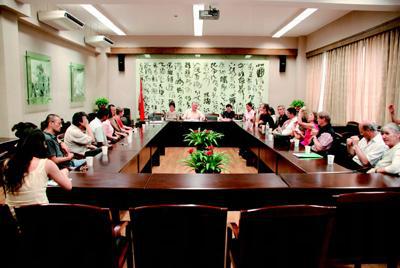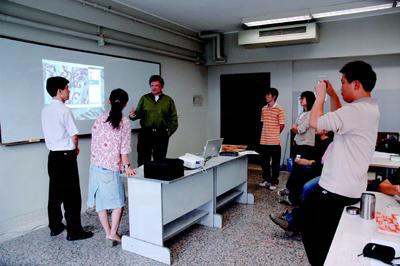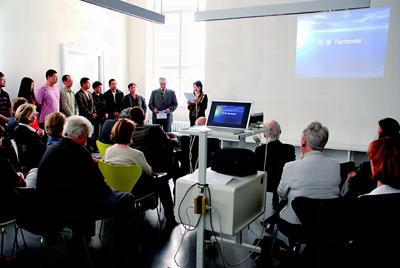Harvesting Happiness in Spring
2009-05-11QianXiaofang
Qian Xiaofang

Spring is always a special season on the campus of China Academy of Art in Hangzhou, for in every spring, students who are about to graduate display their graduation artworks in exhibitions. March 31, 2009 saw the unveiling of a CDK student exhibition on the campus of the academy. CDK (the German abbreviation for China-German Art Academy) is a German postgraduate masters program in the fine art and design between China Academy of Art and the Berlin University of Arts (UdK). The year 2009 will see the first batch of postgraduates graduate from the successful CDK program.
The program started in 2006. Enrolment started as soon as the approval of the Chinese Education Ministry on August 18, 2006. UdK Berlin is steeped in a history of over 300 years ago. After various adjustments and merges over the past 30-plus years, the university is now the largest art education institution in Europe and offers almost a full gamut of art studies. China Academy of Art, an art education institution of more than 80 years, enjoys a fine reputation at home and abroad. The CDK program is regarded as cooperation between the two giants.
For China Academy of Art, the cooperation is a dream that has come true. At the opening ceremony of the CDK in 2006, Xu Jiang, president of the academy, displayed a photo of Berlin taken in 1922 by Lin Fengmian, the first president of the academy. While studying in Berlin as a student in the 1920s, Lin Fengmian dreamed of having a China-Germany art education program in China. And the cooperation between ACC and UdK had started a few years before the CDK program in 2006. In 2002 and 2003, the two institutions succeeded in hosting three summer programs in Hangzhou. The Chinese artists were deeply impressed by the teaching approaches used by German professors. The summer programs were viewed by DAAD (German abbreviation for German Academic Exchange service, one of the worlds largest and most respected intermediary organizations in the field), the major sponsor of the program, as most successful and most fruitful education cooperation program between the two countries. The initial successes gave birth to CDK.
The birth of CDK was most smooth. Zhejiang education authorities gave green light immediately and with the care of the state counselor Chen Zhili, the Education Ministry approved it soon. The DAAD not only gave financial support but also provided the main design of the CDK. A survey conducted by a panel of German education experts in September 2007 spoke highly of the CDK situation.

Unlike most academic programs at CAA where visiting masters often hold lectures and training courses, this CDK program aims to cultivate leaders and talents in the field of art studies, creation, education and administration in the contexts of international and domestic art development. Education philosophy and teaching of UdK was introduced for the CDK. The UdK was responsible for 66% of the major subjects while the CAA took care of the German language studies and subjects of Chinese culture. The CDK students spent four semesters in China and one semester in Germany. Admissions and examinations were made on the basis of the regulations and procedures of the UdK. It was an unprecedented cooperation between the two sides. Concepts, knowledge structure, courses in the German language, and international-level administration: everything about the CDK program looked novel in China.

CDK professors and students have harvested a great deal from the five-semester program. A German art professor compared the project to a work of art, saying that they were surprised and amazed by the finished product just as an artist is when a work of art is completed. Martin Rennert, President of Berlin University of Arts, comments in a letter of congratulation that the close cooperation between the two institutions was based on the cross-culture dialogue and created a great space for dialogues and exchanges in concepts between China and Germany and that the teachers and students of the CDK program served as cultural messengers.
The 40-plus students came from provinces, cities and regions including Taiwan. Some of them had already been prominent artists in their specific fields before they joined CDK. They cherished the opportunity and worked very hard to conquer barriers resulting from the differences in languages, cultural backgrounds and teaching methodology. Student representatives spoke German fluently at the opening ceremony of the graduation exhibition. It was hard to imagine that they knew little of the language two and a half years. □
